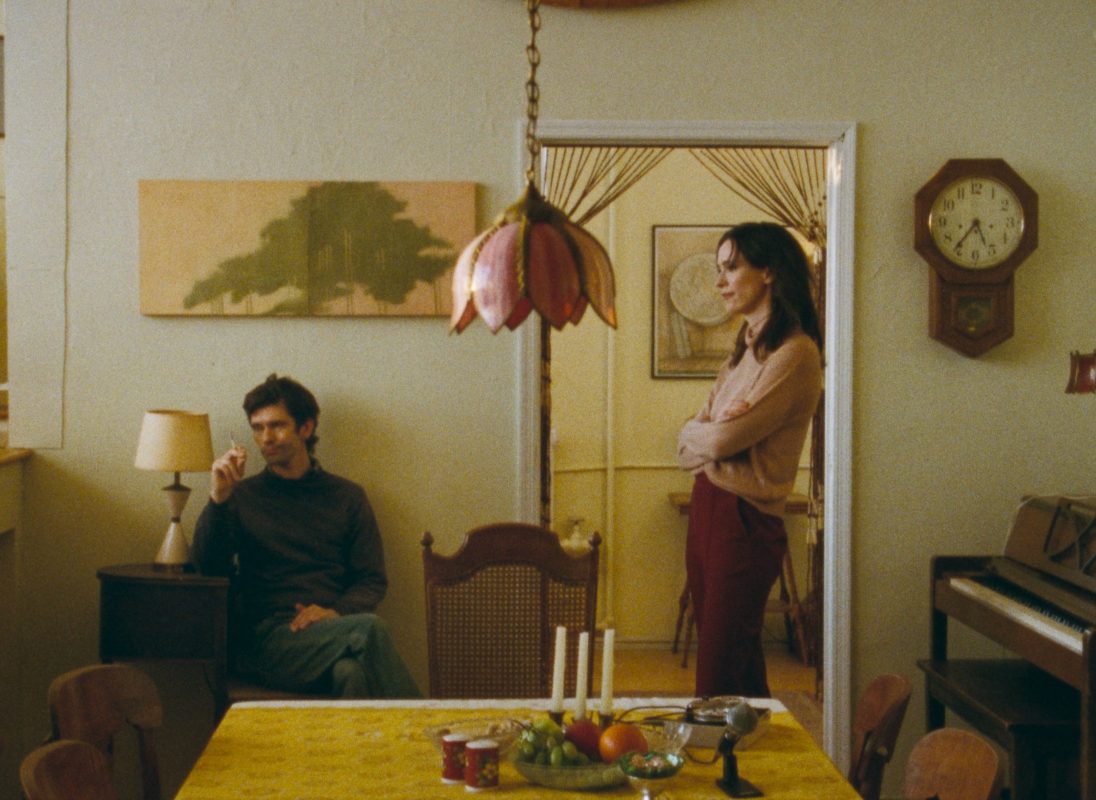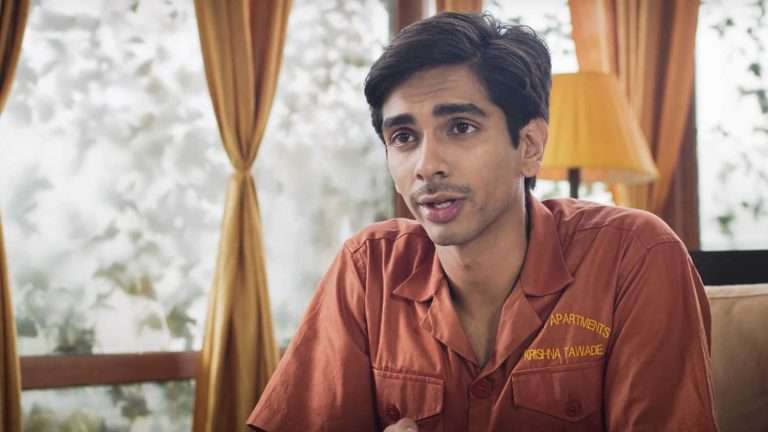“Peter Hujar’s Day” (2025) is a movie so unique in its construction that a mere summary of its plot would have to mention the nature of its production. Less a biopic than an act of interpretive journalism, the film is lifted from a transcript with the highly influential photographer Peter Hujar conducted by his friend, Linda Rosenkrantz. Rosenkrantz’s interview had remained untouched for decades until Hujar’s work resurfaced, as the late photographer received far more admiration in the years following his death in 1987. If the transcript itself served as the basis of the script for “Peter Hujar’s Day,” director Ira Sachs tasked himself with filling in the period-specific details.
Sachs is a notable American filmmaker who has primarily worked in contemporary stories, so to see him take on such a specific moment in history is fascinating. The New York of 1974 is a compelling backdrop for “Peter Hujar’s Day.” It exists as an open space for artists to commune, collaborate, and celebrate each other’s work. Even if the film doesn’t call attention to the way that the city has evolved in the half-century since Rosenkrantz conducted her interview, the suggestion that the meeting of two artists could merit such fascination is quite telling in its own way. In the years before the AIDS crisis, 9/11, the financial crash, and Trumpism, Sachs’ version of New York felt like an open-minded utopia.
Given that Rosenkrantz’s original interview was conducted formally, the film itself doesn’t leave the confines of her apartment. For less than 90 minutes, the conversation between Hujar (Ben Whishaw) and Rosenkrantz (Rebecca Hall) is depicted more or less in real time, with only the occasionally transitional moments inserted to avoid stagnation. The niche focus of the film allows Sachs to prove himself as a rather detail-oriented, immersive storyteller, revealing a technical component of his style that wasn’t as apparent in his earlier work. Sachs has been praised for the emotional maturity of films like “Love is Strange” (one of the 2010s’ most underrated masterpieces), but “Peter Hujar’s Day” indicates that he’s keen not to become pigeon-holed.

What’s most impressive about Sachs’ direction is that “Peter Hujar’s Day” never feels confined or compromised as a result of its setting. Two characters talking in a room for a series of questions feels more appropriate for the stage than the screen, but “Peter Hujar’s Day” would feel impossible to replicate without the benefit of viscerality. Sachs’ camera seems to adhere to the excitable, sporadic musings of Hujar, whose anecdotes come at such a rapid rate that a viewer can feel Rosenkrantz’s breathlessness.
Although Sachs makes deliberate attempts to evoke the style of Hujar’s photography in the film’s visuals, the film avoids becoming too ornate for its own good. The only exception is the final sequence, as the actual reflective comment made by Hujar lends itself to an impressionistic examination of New York from afar. Sachs seems to recognize that, as remarkable as Hujar’s career was, it was only a small component of a much larger movement within artistic history.
Also Read: 75 Best Movies of The 2010s Decade
A film as intimate as “Peter Hujar’s Day” required stars who could remain captivating when tasked with replicating dialogue with little room for deviation. Whishaw’s performance isn’t just an indication of a burgeoning creative partnership with Sachs, but one of the most impressive of his entire career. Whishaw has often been far more chameleonic than he’s been given credit for, and his encapsulation of Hujar’s idiosyncratic vocal tones, didactic body language, and charmingly flippant personality are radically distinct when compared to his other memorable roles. Whishaw is one of those great actors who is perhaps too interesting to ever play a protagonist, as Hollywood’s casting directors seem to single him out for more eccentric supporting roles. “Peter Hujar’s Day” is a great venue for Whishaw to give a singular performance, but it’s also evidence of how successful he can be when asked to be the center of attention.

Hall’s work in the film is equally remarkable. Her interpretation of Rosenkrantz lacks the inherent passiveness that often comes with playing the secondary role in a two-hander. What the viewer is seeing is an interpretation of an interpretation. Sachs has framed a specific version of an interview conducted by Rosenkrantz, which was intended to find the root of what made Hujar a figure of note. The intellectual curiosity, playfulness, and willful restraint Hall establishes in her performance give personality to a character that could have easily become a less compelling audience surrogate. As naturalistic as “Peter Hujar’s Day” is, the back-and-forth between Whishaw and Hall has the elegance of a well-choreographed dance.
Any criticism that “Peter Hujar’s Day” is too brief or observational to provide any real insight is baked into the premise, as it’s hard to criticize Sachs for executing exactly what was intended. Nonetheless, there’s not much room in the film to add context to why Hujar’s work was so celebrated, and why its rediscovery added more weight to the rare interviews he did. Although a title card provides some rudimentary details about the day in question, those who lack knowledge about Hujar’s output are left to grasp at straws as the conversation swings wildly into different areas of focus. Hujar was certainly an icon for the specific community that he represented, but he never achieved a level of fame that would preclude the film from needing to provide a few concrete details on why this fleeting moment in time is worthy of such consideration.
Perhaps there was nothing to be done about the unevenness of a recorded conversation, but there are certainly gaps in “Peter Hujar’s Day” that feel more rudimentary. There’s enough early on to show the subtle humor of Hujar’s delivery and how Rosenkrantz received it, but their connection is occasionally strained when Whishaw is tasked with reciting very specific details. “Peter Hujar’s Day” isn’t necessarily an inviting film, but it’s certainly an impressive feat in experimentation. When compared to how a more generic biopic, a stage production, or a documentary could have covered the same material, “Peter Hujar’s Day” is engaging enough to justify Sachs’s choice of medium.



![Bad Education [2020] Review – A true crime drama uplifted by a fantastic Hugh Jackman performance](https://79468c92.delivery.rocketcdn.me/wp-content/uploads/2020/05/Bad-Education3-highonfilms-768x320.jpg)


![Fashionista [2017]: Fantasia Film Festival Review](https://79468c92.delivery.rocketcdn.me/wp-content/uploads/2017/08/1257888_Fashionista-Amanda-Fuller-1.jpg)

